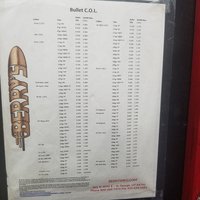Yeah I tried slowing down the index and it seemed to work for most of the cases but a few would still fling powder out. As you said, I just need to practice it more.
Well I plan to start reloading 9mm this weekend, hopefully it won't be as bad.
Slightly off topic, are these $80 chronographs decent? Or do I need to bite the bullet and spend more money? Has decent reviews
http://www.amazon.com/gp/aw/d/B001BR3364/ref=mp_s_a_1_1?qid=1409247881&sr=8-1&pi=SY200_QL40
I'm only reloading 9mm and 38/357 but probably 30-06 eventually when I shoot all 400 rounds of Greek 30-06 ammo for the Garand. So I don't think I'll be using a chronograph all that much so I figured get a cheaper one maybe.
All the crony's from shooting crony have the same technology. only gain is data storage... I have the F1 with remote read out. The remote read out is a plus. I cant see the digital read out on the standard model with out a spotting scope or bino's

![Laugh [laugh] [laugh]](/xen/styles/default/xenforo/smilies.vb/012.gif)
